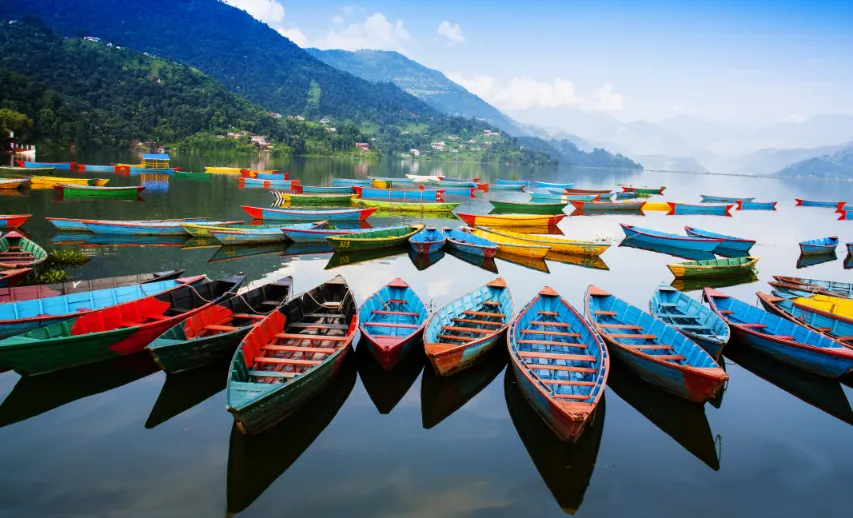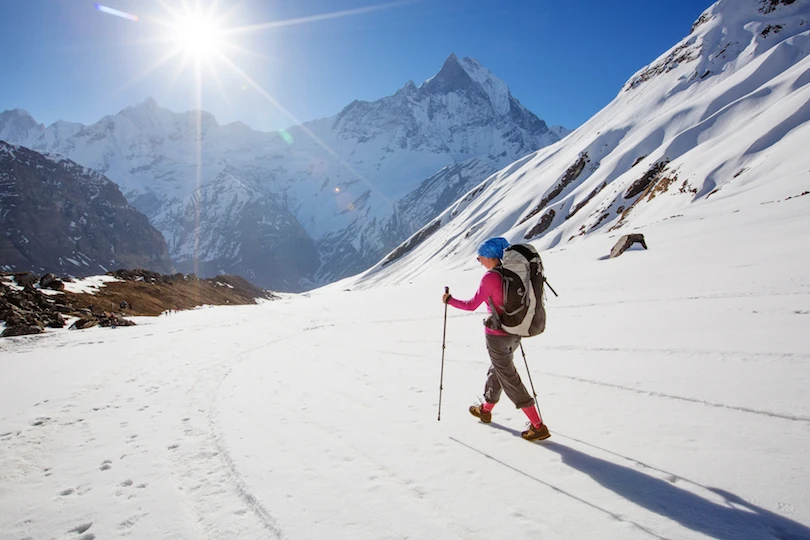
Nepal is located in South Asia between China in the north and India in the south, east and west. While the total land area is 147,181 sq. km including water area of the country that is 3,830 sq. km. The geographical coordinates are 28°00′N 84°00′E. Nepal falls in the temperate zone north of the Tropic of Cancer. Nepal’s ecological zones run east to west about 800 km along its Himalayan axis, 150 to 250 km north to south, and is vertically intersected by the river systems. The country can be divided into three main geographical regions: Himalayan region, mid hill region and Terai region. The highest point in the country is Mt. Everest (8,848 m) while the lowest point is in the Terai plains of Kechana Kalan in Jhapa (60 m).
The Terai region, with width of ranging 26 to 32 km and altitude ranging from 60 -305 m, occupies about 17 percent of total land area of the country.
Kechana Kalan, the lowest point of the country with an altitude of 60 m, lies in Jhapa district of the eastern Terai.The southern lowland Terai continues to the Bhabar belt covered with the Char Kose Jhadi forests known for rich wildlife.
Further north, the Siwalik zone (700 – 1,500 m) and the Mahabharat range (1,500 – 2,700 m) give way to the Duns (valleys), such as Trijuga, Sindhuli, Chitwan, Dang and Surkhet. The Midlands (600 – 3,500 m), north of the Mahabharat range is where the two beautiful valleys of Kathmandu and Pokhara lie covered in terraced rice fields, and surrounded by forested watersheds.

The Himalayas (above 3,000 m) comprises mountains, alpine pastures and temperate forests limited by the tree-line (4,000 m) and snow line (5,500 m). Eight of the 14 eight-thousanders of the world lie in Nepal: Sagarmatha or Mount Everest (8,848 m), Kanchenjunga (8,586 m), Lhotse (8,516 m), Makalu (8,463 m), Cho Oyu (8,201m), Dhaulagiri (8,167 m), Manaslu (8,163 m) and Annapurna (8,091 m).
The inner Himalayan valley (above 3,600 m) such as Mustang and Dolpa are cold deserts sharing topographical characteristics with the Tibetan plateau.Nepal holds the so called “waters towers of South Asia” with its 6,000 rivers which are snow-fed or dependent on rain. The perennial rivers include Mahakali, Karnali, Narayani and Koshi rivers originating in the Himalayas.
Medium-sized rivers like Babai, West Rapti, Bagmati, Kamla, Kankai and Mechi originate in the Midlands and Mahabharat range. A large number of seasonal streams, mostly originating in Siwaliks, flow across the Terai.
Of 163 wetlands documented, the nine globally recognized Ramsar sites are: Koshi Tappu Wildlife Reserve, Beeshazarital (Chitwan), Jagdishpur Reservoir (Kapilvastu) Ghodaghodi Tal (Kailali) in the Terai, and Gokyo (Solukhumbu), Phoksundo (Dolpa), Rara (Mugu) and Mai Pokhari (Ilam) in the mountain region.There are more than 30 natural caves in the country out of which only a few are accessible by road.
There are more than 30 natural caves in the country out of which only a few are accessible by road.
Maratika Cave (also known as Haleshi) is a pilgrimage site associated with Buddhism and Hinduism. Siddha Cave is near Bimalnagar along the Kathmandu-Pokhara highway. Pokhara is also known for caves namely Bats’ shed, Batulechar, Gupteswar, Patale Chhango. The numerous caves around Lo Manthang in Mustang include Luri and Tashi Kabum which house ancient murals and chhortens dating back to the 13th century.
Its geographical location, coupled with rich natural resources and a population of more than 26 million, makes Nepal an ideal country for doing business. A recipient of funding from multi-lateral development banks as well as a destination of foreign direct investment, the Government of Nepal is focused on upgrading its infrastructure – one of many opportunities for U.S. companies.
The Country Commercial Guide for US Companies (PDF 855KB) highlights aspects of doing business in Nepal and provides comprehensive and useful guidelines to interested companies.
The Government of Nepal has created a competitive and investment friendly environment by making the administrative procedures simple and easy and also providing attractive incentives and facilities to the foreign investors making Nepal one of the safest and suitable business destinations in the world.
As of July 2004, according to the statistics of foreign investment division of Department of Industry, there are about 905 foreign direct investment projects in Nepal that worth approximately US$ 1.65 billion. These projects in the sectors like Agriculture / Forestry; Manufacturing; Energy; Construction; Mineral; Tourism and other Service related industries have generated employment opportunities to almost 95,000 people in Nepal. India, USA, China, UK, Norway, Japan, South Korea and Germany are the leading countries with highest number of projects in Nepal.
Nepal Lab turns on the spotlight for your business – putting you at the heart of the healthcare industry. Give your business the opportunities it deserves, join us at Nepal Lab 2026.